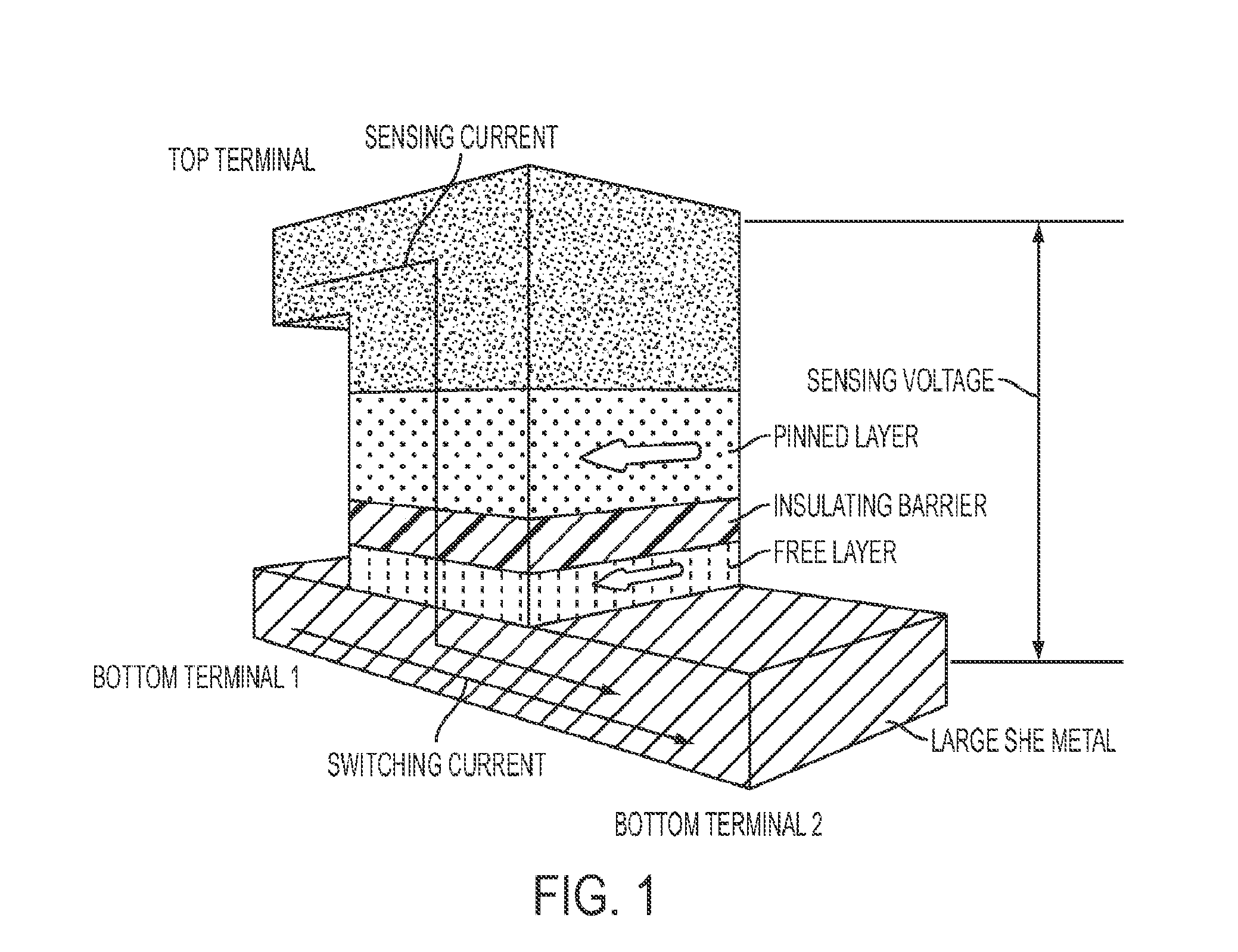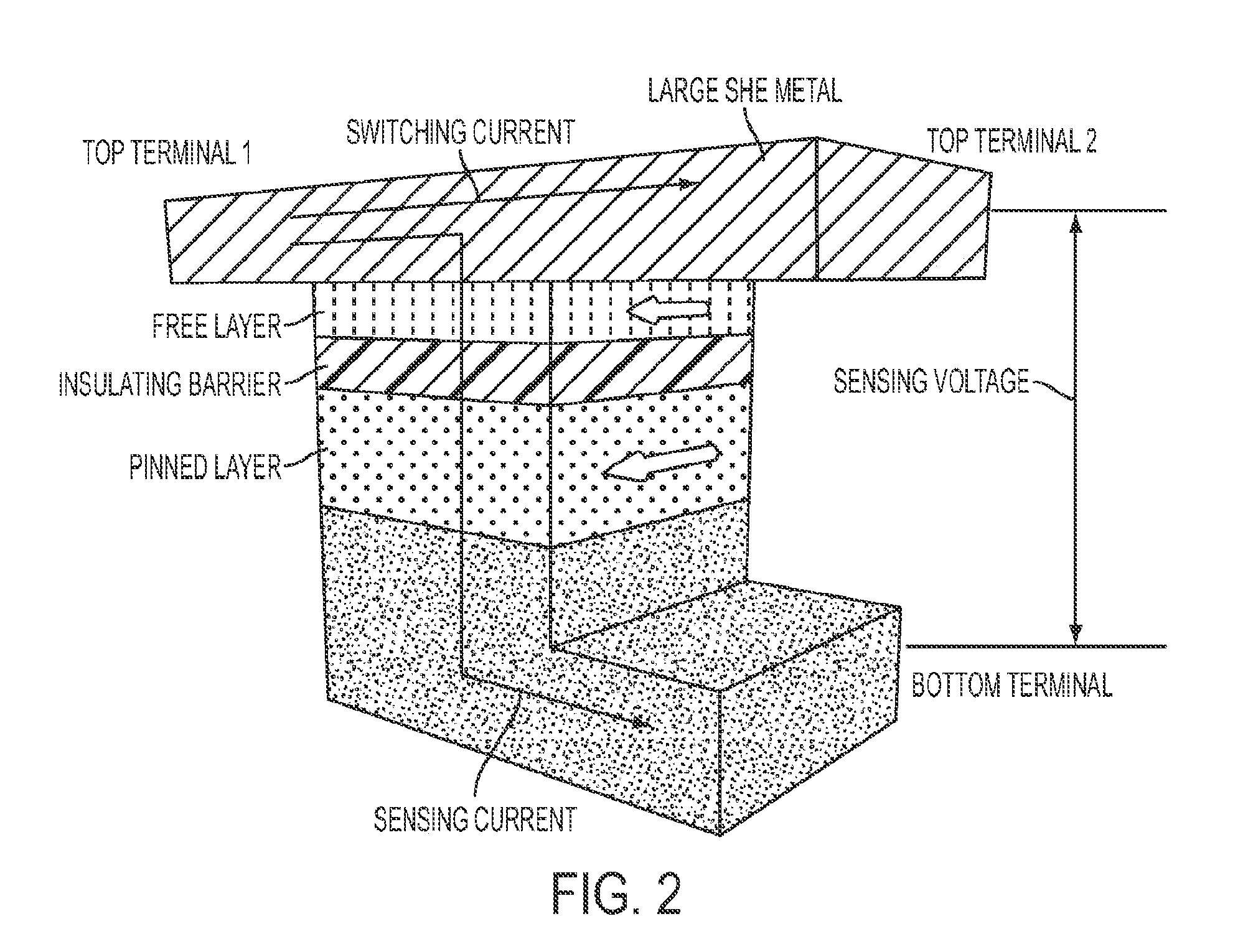Spin hall effect magnetic apparatus, method and applications
a hall effect and magnetic apparatus technology, applied in the field of magnetic memory devices, can solve problems such as commercialization of st-mram
- Summary
- Abstract
- Description
- Claims
- Application Information
AI Technical Summary
Benefits of technology
Problems solved by technology
Method used
Image
Examples
Embodiment Construction
[0042]Embodiments include a spin torque magnetic random access memory (ST-MRAM) structure, a method for fabricating the ST-MRAM structure and a method for operating a ST-MRAM device that results from the ST-MRAM structure. The ST-MRAM structure and device in accordance with the embodiments use a spin Hall effect base layer located and formed contacting a free layer within the ST-MRAM structure and device so that a lateral current through the SHE base layer may be used to switch a magnetic orientation of a free layer with respect to a pinned layer while measuring or applying a sense voltage and a sense current perpendicularly through a magnetoresistive element stack that comprises the pinned layer, a non-magnetic spacer layer and the free layer that contacts the spin Hall effect base layer.
[0043]The embodiments contemplate that specific materials may be used for the spin Hall effect base layer, such as but not limited to Ta and W, with the high-resistivity beta forms of Ta and W bein...
PUM
 Login to View More
Login to View More Abstract
Description
Claims
Application Information
 Login to View More
Login to View More - R&D
- Intellectual Property
- Life Sciences
- Materials
- Tech Scout
- Unparalleled Data Quality
- Higher Quality Content
- 60% Fewer Hallucinations
Browse by: Latest US Patents, China's latest patents, Technical Efficacy Thesaurus, Application Domain, Technology Topic, Popular Technical Reports.
© 2025 PatSnap. All rights reserved.Legal|Privacy policy|Modern Slavery Act Transparency Statement|Sitemap|About US| Contact US: help@patsnap.com



